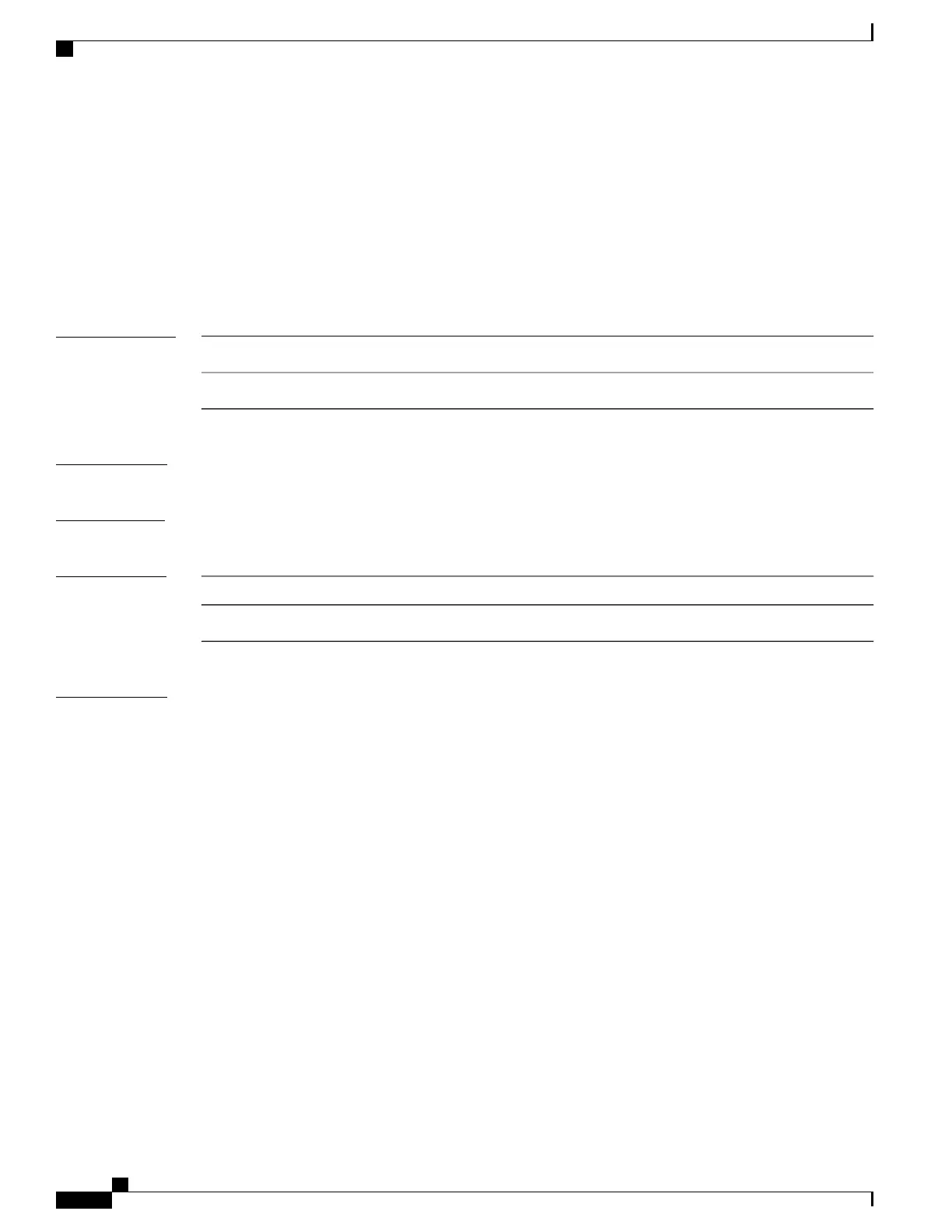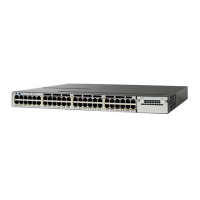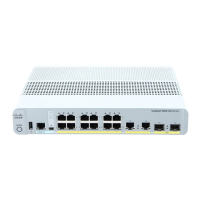class
To define a traffic classification match criteria for the specified class-map name, use the class command in
policy-map configuration mode. Use the no form of this command to delete an existing class map.
class {class-map-name | class-default}
no class {class-map-name | class-default}
Syntax Description
The class map name.
class-map-name
Refers to a system default class that matches unclassified packets.class-default
Command Default
No policy map class-maps are defined.
Command Modes
Policy-map configuration
Command History
ModificationRelease
This command was introduced.Cisco IOS XE 3.3SE
Usage Guidelines
Before using the class command, you must use the policy-map global configuration command to identify the
policy map and enter policy-map configuration mode. After specifying a policy map, you can configure a
policy for new classes or modify a policy for any existing classes in that policy map. You attach the policy
map to a port by using the service-policy interface configuration command.
After entering the class command, you enter the policy-map class configuration mode. These configuration
commands are available:
• admit—Admits a request for Call Admission Control (CAC)
• bandwidth—Specifies the bandwidth allocated to the class.
• exit—Exits the policy-map class configuration mode and returns to policy-map configuration mode.
• no—Returns a command to its default setting.
• police—Defines a policer or aggregate policer for the classified traffic. The policer specifies the bandwidth
limitations and the action to take when the limits are exceeded. For more information about this command,
see Cisco IOS Quality of Service Solutions Command Reference available on Cisco.com.
• priority—Assigns scheduling priority to a class of traffic belonging to a policy map.
• queue-buffers—Configures the queue buffer for the class.
Command Reference, Cisco IOS XE Everest 16.5.1a (Catalyst 3650 Switches)
642
class
